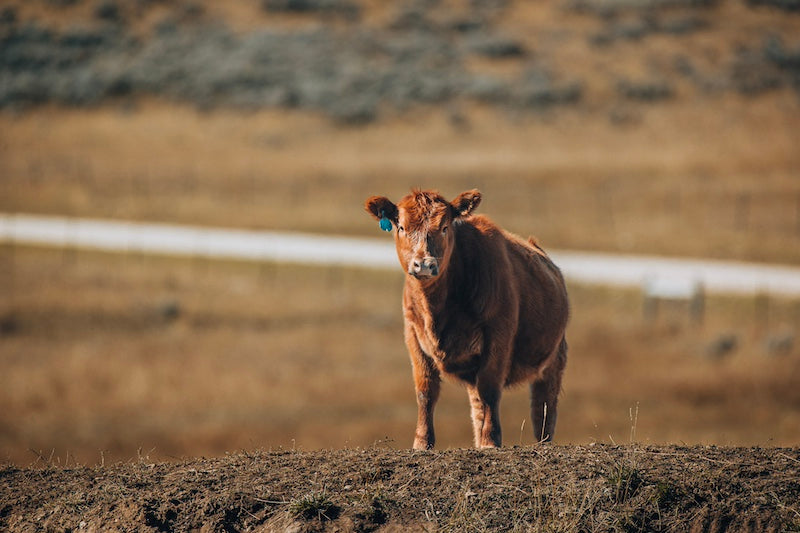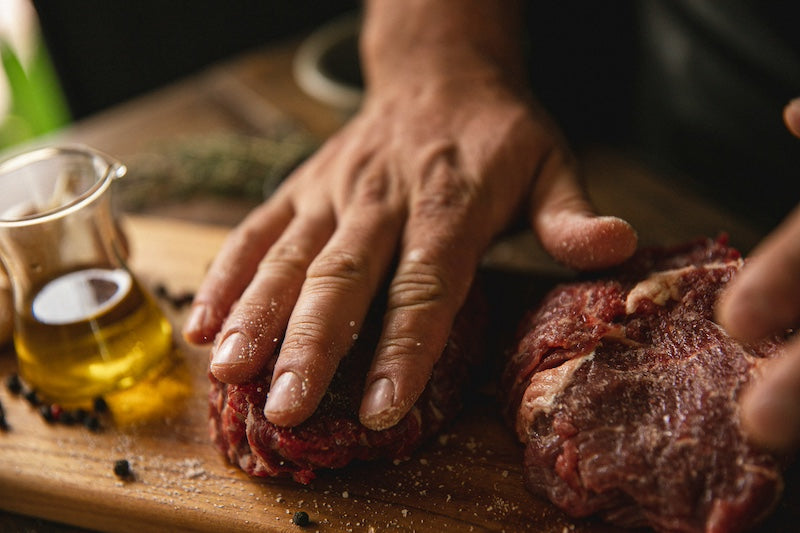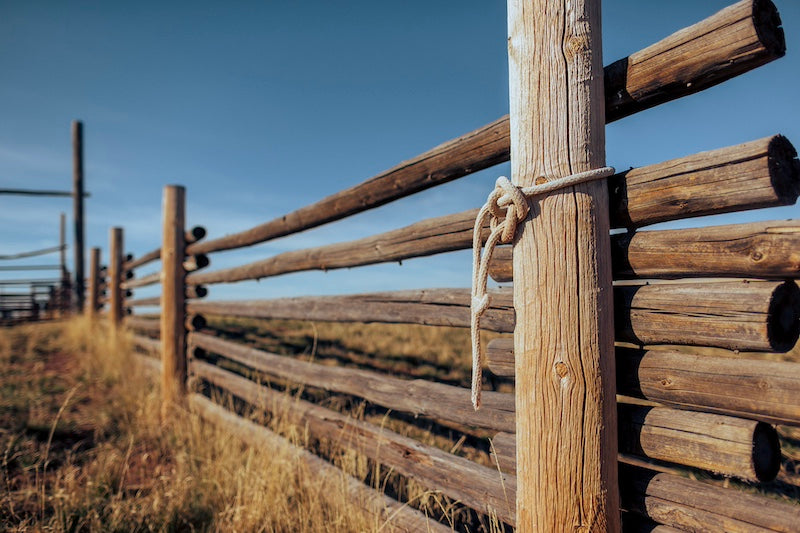
The Freshness Factor: Why Locally Raised Beef Tastes Better
Go to any grocery store, and you’ll see beef marketed as organic, grass-fed, and locally raised, all hot words in the food industry. People want beef they can trust. Who wouldn’t? But the struggle is knowing what to trust when searching for quality meat.
Several years ago, a research team at Kansas State University experimented with consumers. They fed the consumers ground beef patties (80% lean, 20% fat). The patties came from the same production lot/day; they were virtually identical. However, the research team randomly assigned the patties various label terms including all-natural, no antibiotics, no added hormones, fresh never frozen, grass-fed, locally sourced, and organic. Consumers were then asked to evaluate the patties for tenderness, flavor, and texture. Regarding flavor, consumers rated the patties labeled as grass-fed and organic the highest. Remember, the patties were identical.
Consumers said the patties labeled “locally sourced” were better in terms of tenderness, juiciness, flavor, texture, and overall liking. Consumers rated the patties even higher when told the ground beef was grass-fed and locally produced. The experiment proved two things: (1) adding production claims that consumers recognize improves perceived palatability and (2) consumers are more likely to associate quality with said production claims.
The Kansas State University team reported a perceived “quality halo” around locally produced products, even when, as in their experiment, there wasn’t a difference. They went on to say the events of 2020 and 2021 caused consumers to want locally sourced, premium quality food.
Of course, locally raised beef is often fresher and generally higher quality than your supermarket beef. We share these findings with you to highlight the power of production claims. Labels can be helpful, but knowing what each label means and understanding the value of sourcing are even more beneficial.
We could spend hours explaining each production claim’s nuances. In this article, we’ll focus on “locally raised beef.”
What is locally raised beef, and how is it defined at Lazy T Ranch?
Although there isn’t a formal definition, “local food” commonly means food grown or raised between 100-400 miles from where it’s purchased. We use “locally raised beef” to refer to cattle raised near where they were born.
Some beef producers frequently transport their cattle from state to state, which can put damaging stress on the animals. Cattle that spend most of their lives in one location are more likely to produce tender beef thanks to less stress.
We like our cattle in our backyard. That’s what local means to us.
See, food terminologies are subjective! We encourage you to research because knowledge is power and leads to well-informed decisions. You deserve fresh beef that’s truly high quality, not perceived to be so. Before we go any further, the author (Caroline, the ranch’s media girl) wants to share thoughts on the food industry.
Hi there! Offering a personal commentary may seem unorthodox, but as I researched for this article, I became fired up about general misperceptions about the beef industry and marketing ploys baiting consumers into purchases.
One thing I love about Lazy T Ranch is its passion for raising honest beef. We’re not trying to reinvent the wheel. We raise cattle like the generations before us, with natural feed, fresh spring water, open grasslands, and cowboys on horseback. Simplicity makes us revolutionary, at least during an age when most food isn’t simple.
I understand why consumers want clean, honest food now more than ever. There’s a strong distrust in the food industry due to additives, secret ingredients, unnatural processing—you name it. When consumers purchase beef labeled “organic,” “grass-fed,” “locally raised,” etc., it’s because they want uncomplicated, high-quality meat. Unfortunately, as stated earlier, not all labels mean better beef, and companies often use production claims to jack up prices on average products. To end my impromptu commentary, I’d like to share a piece of advice that’s influenced how I view life and the food industry.
In high school, I was close friends with my English teacher. One day she told me, “If something isn’t simple, it most likely isn’t God.” She related that statement to life, spirituality, and writing. Now I relate it to food. If the food isn’t simple, it most likely isn’t good for you.
Put aside labels and terminology. The question when it comes to food should be . . . IS THIS SIMPLE?
When I think about locally raised beef, I think about simplicity. Our cattle spend their lives on our Wyoming ranch. They have the fancy terms—grass-fed, no added hormones, no antibiotics, all-natural, locally raised. Boil that down, and it means one thing. Simple.
Sourcing is the most important factor to consider when purchasing beef. Knowing where your beef was produced and how it was raised gives you confidence in the labels.
Why does locally-raised beef often taste better?
Despite the Kansas State University experiment, locally-raised beef (or one-location-raised beef) generally tastes better than nonlocal beef. We could credit the lack of transportation stress, but diet and overall living conditions play major roles.
Sidenote: If you purchase beef solely based on proximity, you could end up with beef from your local feedlot, where cattle spend their entire lives in pens eating a grain-based diet. Ask questions.
Let’s look at how diet and living conditions affect beef’s flavor and quality.
One of the most common mantras in the beef industry is fat is flavor. Without fat, beef tastes bland, and with fat—well, beef can vary in taste.
Diet hugely impacts beef’s flavor because the nutrients in cattle’s feed dictate their fat’s acid and micro-nutrient profile. Whatever cattle eat, you taste. For example, a diet of fresh green pasture plants has a different nutrient profile than a grain, hay, and silage diet, so of course the beef fat has a differing taste.
There’s a contrast between fed and finished. “Fed” refers to what the animal ate for most of its life. “Finished” describes what the animal ate before slaughter, or what made it fat. Most beef produced in the United States is grain-finished meaning the cattle ate a grain-based feed during the months before slaughter. The grain gives the beef’s fat a rich, buttery taste typically preferred over grass-finished (grass-fat) beef’s described sour, metallic flavor.
People usually have strong opinions about “fed” and “finished.” We won’t dive into the numerous factors because beef’s quality in terms of flavor is subjective and revolves around preference. Instead, we’ll focus on Lazy T Ranch’s grazing philosophy and why we believe in our feeding program.
Our beef is grass-fed, grain-finished, and pasture-raised. We let our cattle roam and graze on feed grown at the ranch because we believe free-range practices are more humane and healthier for the animals. Our cattle do not receive antibiotics, unlike grain-fed livestock that receive antibiotics to prevent diseases from a high-calorie diet and overcrowding. The natural feed creates beef with a better fatty acid composition and antioxidant content.
After spending their lives in our backyard, our healthy cattle go to a feedlot and eat a closely monitored grain-based diet for the months before slaughter. The grain allows the cattle to develop the right amount of fat (marbling) and contributes to the overall flavor.
Finishing cattle is like aging whiskey in a barrel. It creates flavor but doesn’t take away from the quality. Yes, it is possible to fatten cattle on grass, but it takes longer and produces beef with an acquired taste. To sum up this longwinded answer to why locally raised beef tastes better . . .
- Cattle raised near where they were born aren’t subjected to much transportation, which minimizes their stress and prevents dark cutting.
- Locally raised cattle often spend their lives eating grass. This contributes to healthier animals and better-tasting beef. Of course, it’s important to learn where and how the cattle were raised to confirm they did spend their lives eating natural feed.
- Locally raised beef should be about simplicity. Fantastic beef comes from quality feed, fresh water, open spaces, and healthy cattle. Imagine that.
What are the nutritional benefits of consuming local beef?
Although cattle’s diet affects the flavor, there isn’t research to prove grass-fed is significantly healthier for you than grain-fed beef. Grass-fed beef may have more omega-3 fatty acids, linolenic acids, antioxidant vitamins, and a lower fat content.
We believe “you are what you eat eats” if that makes sense. The nutritional components between grass-fed and grain-fed beef may be similar, but the cattle’s diet affects the beef’s overall quality. Every time we give our cattle grass or premium grain, we feed our food. That’s a big deal to us.
Locally raised beef is generally healthier—we’ll stand by that. However, beef is nutritious, and if we must die on a hill, that’s the one we choose.
Eat beef.
Unlike other meats, beef is incredibly nutrient-dense. (We call it a superfood.) Not only does beef offer high-quality protein, iron, and plenty of vitamins, but it also contributes to mental wellness.
Surmounting research is finding that people who eat beef are less anxious and depressed. (If you need another reason to fire up the grill, there you go.) Beef is high in omega-3, iron, zinc, calcium, choline, vitamins A, D, C, B12, E, K, and more, all of which positively impact mental health.
A 2012 study of 1,000 women found that red meat intake is vital to the prevention of depression. Researchers observed women who consumed the least amount of red meat were twice as likely to be diagnosed with depression or anxiety disorder compared to those who ate the recommended amount.
A 2018 study of over 90,000 adults discovered that vegetarian and vegan dietary patterns were associated with an increased risk of depression. Researchers suggested nutritional deficiencies, particularly in B12 and iron, may contribute to the risk.
Beef is good for you, and ranch-raise, locally sourced beef is even better.
How does local beef support the community and environment?
When you buy local beef . . .
- You keep ranchers in business,
- Support US agriculture and our national food supply,
- And maintain access to quality meat.
Supporting local beef production has conservation benefits. Grazing sustains the health of grasslands, improves soil quality with manure, and preserves open space and wildlife habitats. Local beef production also fuels livelihoods and community vibrancy in rural areas.
In what ways can consumers verify the freshness and locality of their beef?
We’ve pelted you with a lot of information. The key takeaway: Don’t settle for labels and production claims. Do your research. Look for simplicity.
Here at Lazy T Ranch, we want to empower you to make educated buying decisions so you can feel confident in your meat. Shopping for premium, natural beef doesn’t need to be complicated.
Click to explore our beef options and bring a taste of our ranch to your table.


